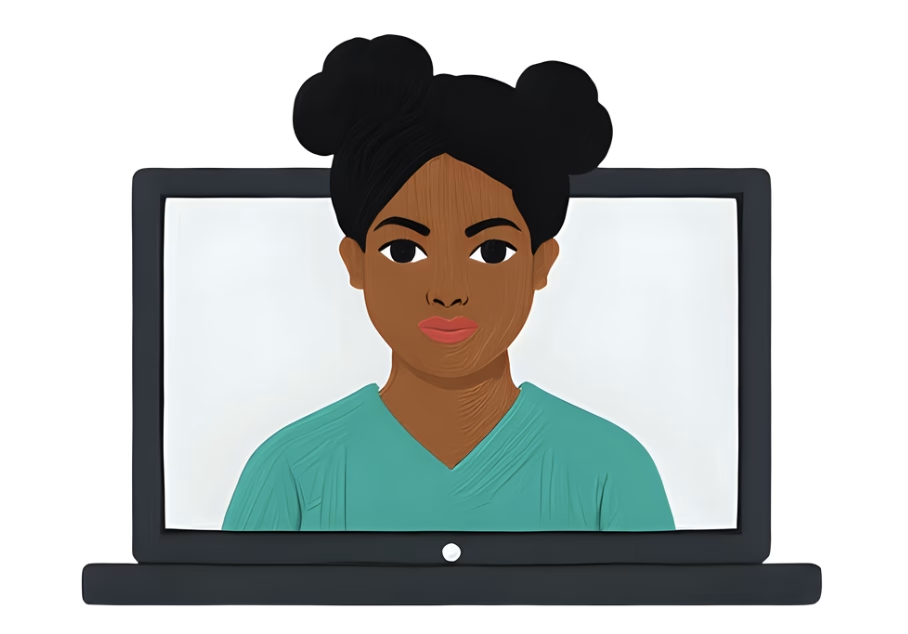
Virtual Nursing: How to Successfully Transition from Bedside to Digital Care
Have you noticed how many of your patients now prefer virtual visits? Or caught yourself wondering what it would be like to provide nursing care through a screen instead of in person? Maybe you’ve seen job postings for “virtual nurses” and thought, “How can I do that?”
Virtual nursing is rapidly becoming one of the most sought-after specializations in healthcare. But here’s what most nurses don’t realize: transitioning into virtual nursing isn’t as simple as applying to remote positions and hoping for the best. There’s a specific skill set, technology knowledge, and strategic approach that separates nurses who successfully make this pivot from those who struggle or give up.
If you’re curious about virtual nursing but unsure where to start or whether your bedside experience actually translates to digital care delivery, you’re in the right place. Let’s explore what virtual nursing really involves, why experienced nurses are uniquely positioned to excel in these roles, and what you need to know to make a successful transition.
What Is Virtual Nursing?
Virtual nursing encompasses a range of remote healthcare roles where nurses provide care, coordination, education, and support through digital platforms rather than in-person settings. Think of it as nursing reimagined for the digital age: you’re still using your clinical judgment, patient education skills, and care coordination abilities, just through different delivery methods.
Unlike traditional nursing where your presence is tied to a specific facility and shift schedule, virtual nursing can offer location independence and schedule flexibility that seemed impossible just a few years ago. The COVID-19 pandemic accelerated the adoption of virtual care models that were already gaining traction, and healthcare systems have discovered that remote nursing is not only convenient but sometimes more effective than traditional nursing.
Why Virtual Nursing Is Perfect for Experienced Nurses
Your years at the bedside have prepared you for virtual nursing in ways you might not immediately recognize. Every time you’ve triaged multiple patients simultaneously, you’ve been honing the prioritization skills essential for telehealth triage roles. When you’ve calmed an anxious patient or family member with just your voice and presence, you’ve demonstrated the communication mastery that virtual nursing requires.
Virtual nursing actually demands a higher level of clinical expertise than many people assume. Without the ability to physically assess patients, you must rely more heavily on your clinical judgment, assessment skills, and ability to guide patients through self-evaluation. Your experience reading subtle cues in patients, such as noticing when something’s “just not right” even before vitals reflect it, translates directly to detecting concerning patterns in remote monitoring data or hearing worry in a patient’s voice during a phone triage call.
Perhaps most importantly, your understanding of how healthcare systems work gives you a significant advantage. Virtual nurses often serve as care coordinators and patient navigators, roles that require intimate knowledge of how different providers, specialties, and facilities interact. You already speak the language of healthcare and understand its complexities in ways that can’t be taught in a classroom.
The Diverse Landscape of Virtual Nursing Roles
One of the most exciting aspects of virtual nursing is the sheer variety of opportunities available. Let’s explore the main categories where virtual nurses are making an impact.
Telehealth and Telemedicine Nursing
Telehealth nurses conduct video or phone visits with patients for a wide range of concerns, from urgent care consultations to chronic disease management. These roles often involve assessment, education, medication management support, and care coordination. Some telehealth positions focus on specific populations like pediatrics or women’s health, while others provide general nursing support across age groups and conditions.
Remote Patient Monitoring
As wearable devices and home monitoring technology advance, remote patient monitoring has exploded. In these roles, you review data from patients’ connected devices—blood pressure monitors, glucose meters, weight scales, pulse oximeters—and intervene when trends suggest problems developing.
This proactive approach to care allows you to prevent complications before they require emergency intervention. You might perform tasks such as coaching a diabetic patient on improving glucose control or identifying concerning vital sign patterns that warrant physician consultation.

Virtual Care Coordination and Navigation
Care coordination nurses help patients navigate complex healthcare journeys, ensuring seamless communication between multiple providers and preventing gaps in care. As a virtual care coordinator, you might work with patients managing multiple chronic conditions, supporting them through specialist referrals, medication changes, and treatment transitions.
Patient navigation roles take this further, guiding patients through specific healthcare experiences like cancer diagnosis and treatment, helping them understand their options, coordinate appointments, and access resources. These positions combine clinical knowledge with strong communication skills and deep empathy for patients facing overwhelming situations.
Triage and Advice Lines
Virtual triage nurses provide critical decision support for patients unsure whether their symptoms require immediate attention, an urgent care visit, or can be managed at home. These fast-paced roles require excellent assessment skills, the ability to remain calm under pressure, and confidence in making independent clinical judgments.
After-hours triage positions are particularly common, providing coverage when clinics are closed and serving as a vital resource for patients and parents managing health concerns outside regular business hours.
Virtual Nursing Leadership and Program Development
As virtual care programs expand, healthcare organizations need experienced nurses to design, implement, and oversee these initiatives. Virtual nursing leaders develop protocols, train remote teams, ensure quality and compliance, and continuously improve virtual care delivery models.
These positions combine clinical expertise with strategic thinking and often offer excellent compensation along with the satisfaction of shaping the future of healthcare delivery.
The Virtual Nursing Lifestyle: What to Really Expect
Let’s talk honestly about what working as a virtual nurse actually looks like day-to-day, because the reality includes both significant advantages and challenges worth considering.
The flexibility is real and substantial. Many virtual nursing positions offer schedule options that bedside nursing simply cannot—whether that’s consistent daytime hours, part-time schedules that actually work with family obligations, or even the ability to work from anywhere with reliable internet. This flexibility has been life-changing for nurses managing childcare, caring for aging parents, or simply craving a more sustainable work-life balance.
The physical demands decrease dramatically. No more twelve-hour shifts spent primarily on your feet, no lifting and turning patients, no exposure to infectious diseases or workplace violence. For nurses dealing with back problems, chronic pain, or simply the accumulated physical toll of bedside work, this alone can feel transformative.
However, virtual nursing presents its own challenges. The isolation can be surprising for nurses accustomed to the camaraderie of working alongside colleagues. You’ll need to be intentional about maintaining professional connections and seeking out the social interaction that naturally occurs in traditional settings.
Technology becomes your essential tool rather than a supplementary one, and you’ll need to develop comfort with multiple platforms, troubleshooting issues, and managing the occasional frustration when systems don’t cooperate. The good news is that most technology is more intuitive than hospital EMR systems, but there’s still a learning curve.
You’ll also need strong self-discipline and time management skills. Without the structure of a physical workplace and scheduled breaks dictated by unit routines, you’re responsible for managing your time, maintaining boundaries between work and personal life, and staying motivated without direct supervision.
Taking the Next Step Toward Virtual Nursing
Virtual nursing represents one of the most accessible paths to achieving a better work-life balance while maintaining meaningful clinical practice. The opportunities are real, growing rapidly, and increasingly diverse, but success requires understanding both the nursing aspects and the business fundamentals of remote work.
For nurses serious about making this transition, structured guidance can dramatically accelerate your success and help you avoid the common pitfalls that derail many would-be virtual nurses.
At Stepping Stone Academy, our Virtual Nursing: A Modern Roadmap to Remote Care course provides exactly this type of comprehensive preparation. Led by Dr. Kimberlee Rowett, DNP, MSN, MBA, RN—a nurse leader with over 11 years of nursing experience who has successfully built and led virtual care programs across multiple states—this course offers the practical, real-world guidance that comes only from someone who has personally navigated this transition.
Virtual nursing isn’t just the future of healthcare—it’s the present reality for thousands of nurses who have discovered that meaningful patient care doesn’t require sacrificing their physical health, personal life, or professional fulfillment. Your clinical expertise, combined with strategic guidance on navigating this evolving field, positions you to build a nursing career that finally works for you rather than against you.
Ready to discover if virtual nursing is your next chapter? Explore our Virtual Nursing: A Modern Roadmap to Remote Care course and learn exactly how to leverage your bedside experience for a flexible, fulfilling remote career that honors both your nursing expertise and your need for balance.
